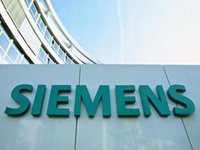German engineering and electronics conglomerate giant Siemens AG has announced it is to cut its workforce by 15,000 (4% of total) as part of its strategy to reduce costs.
Siemens and its subsidiaries have about 360,000 employees in nearly 190 countries.
Approximately ten thousand jobs will be cut around the world, and 5,000 in Germany. According to Bloomberg, the company had initially considered cutting 8,000 jobs in Germany.
Job cuts in Germany will occur at the industry division (2,000 jobs), energy sector (1,400 jobs), and infrastructure and cities unit (1,400 jobs). Two-hundred office workers will have to leave by the end of September next year.
In July this year, Peter Löscher, who had been Chief Executive Office (CEO) of Siemens since 2007, had a disagreement with the company’s board of directors regarding profitability and was axed. He was replaced by Josef Käser, who had been Chief Financial Officer for seven years.
Siemens said it would fail in its profit margin target
On July 25th, 2013, Löscher announced that the company would not meet its goal of profits making up 12% of sales next year. Siemens has been involved in a € 6.3 billion ($8.5 billion) savings program – part of an effort to catch up with superior profitability among its main competitors, including General Electric Co. (USA) and ABB Ltd (Switzerland).
In 2012, General Electric’s profit margin was 15%, ABB’s 10.3%, while Siemens trailed at 9.5%.
Siemens says it has reached an agreement with trades unions regarding about half of the job cuts, “the other half will follow…” Many of the job cuts involve early retirement.
Siemens emphasized that nobody has yet been laid off. It added that it has no intention of making enforced redundancies, and hopes to rely on attrition and voluntary severance deals.
A Siemens spokesman said the company announced its job-cutting plans because it wanted to end speculation in the market regarding how many jobs were to be cut.
Siemens products and services
Siemens products and services are broadly divided into the following categories:
Buildings-related products – building automation equipment and systems, low-voltage switchgear (inc. circuit protection and distribution products), building safety equipment and systems, building security equipment and systems, and building operations equipment and systems.
Drives, automation and industrial plant-related products – motors and drives for conveyor belts, compressors for oil and gas pipelines, industrial plants for water processing and raw material processing, pumps and compressors, mechanical components including gears for wind turbines and cement mills, heavy duty motors and drives for rolling steel mills, and automation equipment and systems and controls for production machinery and machine tools.
Energy-related products – gas and steam turbines, generators, power automation products, compressors, wind turbines (on- and offshore), medium-voltage components and systems, high-voltage transmission products, alternating and direct current transmission systems, power transformers, and high-voltage switching products and systems.
Lighting – at Siemens’ OSRAM subsidiary, which makes halogen, incandescent, high-intensity discharge, compact fluorescent, fluorescent, and Xenon lamps. Opto-electronic semiconductor light sources, including LEDs (light emitting diodes), organic LEDs, high power laser diodes, LED systems and LED luminaires, electronic equipment, and lighting control and management systems.
Medical products – clinical information technology equipment, medical devices for hearing impaired patients, in-vitro diagnostics equipment.
The medical products division also makes a wide range of imaging equipment, including x-ray equipment, radiation oncology and particle therapy equipment, angiography, CAT scanners (computed tomography), MRI scanners (magnetic resonance imaging), fluoroscopy, mammography, and molecular imaging ultrasound.
Transportation and logistics-related products – rail vehicles for mass transit, regional and long-distance transportation, central control systems, equipment and systems for rail electrification, locomotives, interlocking, and automated train controls.
Siemens also makes equipment and systems for road traffic, including traffic detection, information and guidance, equipment for baggage and cargo tracking for airports, and letter parcel sorting equipment for postal automation.

